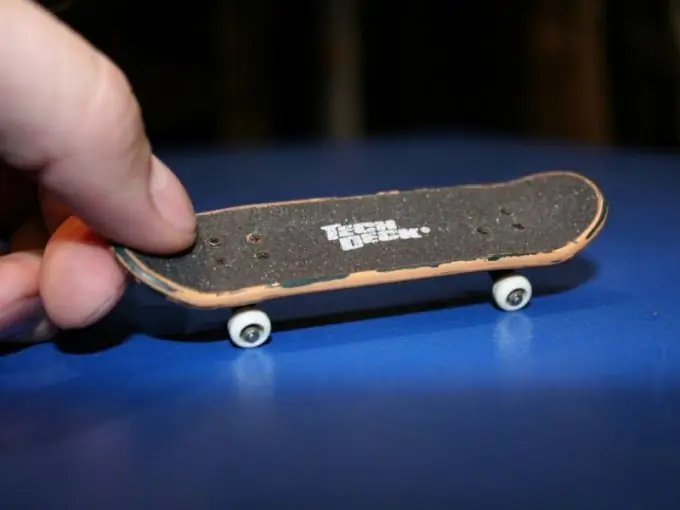The word "fingerboard" (or simply "finger") in translation into Russian means "fingerboard" or "fingerboard". And in fact, it is a skate reduced several times, which is controlled with the help of the fingers (their movements almost completely repeat the movements of the legs when riding a skateboard).

Instructions
Step 1
If you decide to conquer the fingerboard, remember a few rules: when performing tricks, use only the index and middle fingers, control of the rest is not allowed (the thumb can only be used when grabbing the board in flight). In addition, you cannot keep your palm on the fingerboard when landing, pick up the board in the air and only then "return" to the ground, and it is also forbidden to throw the board after you have "grabbed" it.
Step 2
The basis of finger riding is the ollie jump (jumping up with the board without taking your fingers off it), having mastered which you can learn how to do other tricks. To do this, place your middle finger on the tail (tail) of the board, and place your index finger over the front suspension. Then, slightly pulling the board back, sharply press the first of them on the tail, and with the second "pull" the board up so that it follows your finger. "Taking off", the board should be kept parallel to the surface, and when landing, put your fingers on the screws of the suspensions (index - on the front, middle - on the rear).
Step 3
If you are good at this jump, move on to more difficult ones - flips, slides and grinds. One of the most common is the kickflip (it differs from the ollie in the position of the index finger - it is located closer to the edge of the finger). Taking off with a sharp click, twist the board downward with your index finger (you can simply bend it), and then, when the board has spun by ¾, catch it with your fingers and “ground”. A hilflip is approximately the same in terms of the principle of execution, however, here the index finger should be placed on the screws not next to, but on the opposite edge of the fingerboard from you, then the trick will be performed correctly, and the board will rotate around its axis away from you.
Step 4
Slides and grinds are tricks that are performed on the surface of a face or rail. An example of the simplest grind is the so-called 50x50, when the suspensions slide along the edge. As soon as three centimeters are left before it, do an ollie and lower the finger to the edge so that the bolts of both hangers are on it, and the board stands parallel. Next, slide and jump in one of two ways. The first of them - you need to raise the front suspension and turn the finger 30 degrees relative to the edge, and then with "allowed" fingers to slightly pull it forward. You need to jump in the second way at speed and at the end of the edge: without changing the position of the board, keep it parallel to the ground like an ollie.






